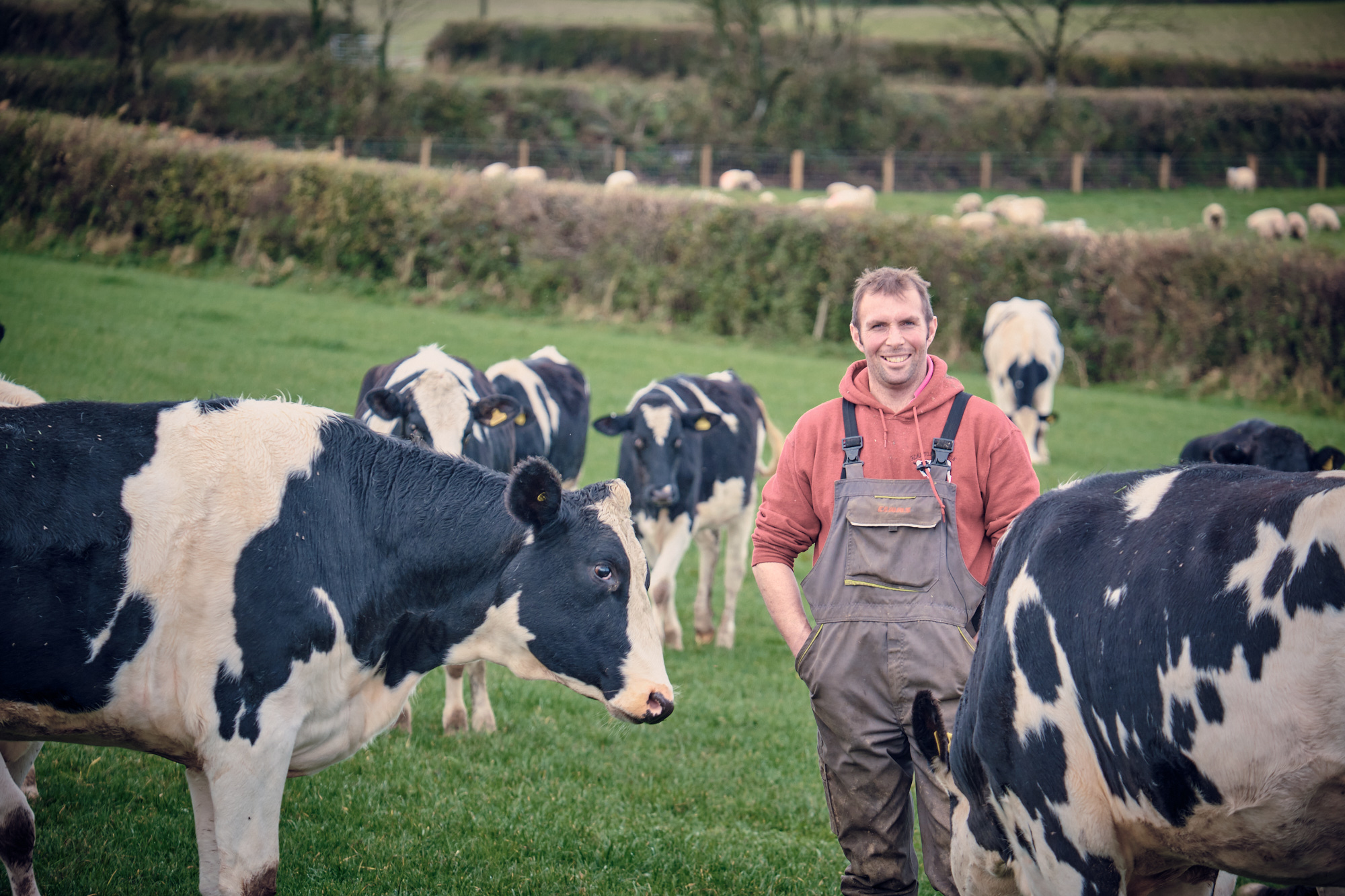Pregnancy rates drive profitability
Wednesday, 26 May 2021
We explore fertility with strategic dairy farmer Jim Kirk who has lifted pregnancy rate across his year round calving herd from 20% to an impressive 25%.
All-year-round calving requires flexibility to adapt to challenges that arise throughout the year. Regularly monitoring performance, identifying issues, and tackling them as soon as possible is key to the financial health of your farm.
Jim farms on 700 acres at Heaton Barton Farm, near Okehampton in Devon with his parents and brother-in-law. His fully housed 606 Holstein cows produce over 11,000 litres, supplied to Crediton Dairy on a liquid contract. Cows are kept in two sheds in stable groupings and milked twice a day on a 60-point GEA rotary parlour.
With a calving interval of 385 days, 180 days in milk and yield of 11,000 litres, Jim’s herd is already performing well. Measuring and monitoring pregnancy rate is fundamental to the financial performance of his business. He’s expected to deliver a level profile for his liquid contract so any dips in the calving pattern show up clearly on the monthly milk statement.
Read our guide to improving fertility in all year round calving herds
Breeding longer lasting cows, with good feet and legs while maintaining slightly reduced stature is his focus for the future. Sexed semen is increasingly used to reduce the number of dairy bull calves.
Cows selected to breed replacements receive a maximum of two inseminations with sexed semen followed by beef straw, if not in-calf. Heifers calve at 24 months on average and decisions to serve are based on their age and physical size. Jim recognises that better heifer management is an area where there is room for improvement so a new youngstock shed is in the planning stage.
Professional support and advice are provided by Genus as well as his vet who carries out weekly PD checks. A report is generated from VetIMPRESS after each visit to track key areas such as submissions, eligibility, conception and pregnancy rate.
Regular monitoring encourages minor adjustments and ongoing improvement, which helps Jim achieve consistently good results with his herd.
The most recent figures show that pregnancy rates across the herd have improved to 25%, placing him in the top 5% of British herds.
Review Heanton Barton's other KPIs
The improvement in pregnancy rate reflects the effort made by Jim and his team over recent months, which include:
Housed environment
Fans were installed to improve air flow and tackle heat stress, which had become an issue, so. A curtain was added to one of the sheds to reduce rain incursion and deterrents are used to deal with starlings that are a problem at certain times of the year.
Transition cow management
All dry cows spend three weeks in a cubicle shed before transferring to loose housing three weeks prior to calving. A low stocking density is maintained in the shed along with plenty of feed space.
Jim and his Herdsman, Harrison, increase dry matter intakes during transition. The far offs are fed grass silage and minerals, and four weeks before calving the ration comprises a high proportion of straw, grass silage, maize, minerals and soya. Post calving, upon entering the milking herd, the ration consists of maize, grass silage and blend.
Calving protocol
All cows are offered warm water and fed a milking ration post-calving. Fresh cows are kept in one group so they can be monitored closely. Harrison checks them at 12- and 22-days post-calving using a Metricheck to identify cows with endometritis and allow appropriate treatment before mating commences.
Bulling and serving
Cows are chalked every day at 2pm and all AI is done following the afternoon milking, but this is under review. Ovsync, Cyder sync and Estramate are also being trialled for any non-bullers.
Body Condition Scoring
All cows are assessed at PD and non-bullers tend to have higher scores. Regular scoring allows issues to be identified quickly and management changes made within the group.
Staff Development
Harrison went to the USA with Worldwide Sires for a week to visit and learn from their herds and breeders. He found the trip inspirational and returned with a better knowledge about the reproductive system, especially applying and interpreting chalking cows, all of which are now applied on farm.
Communication
The whole team meet at 10am every day to share what is happening in each area of the business and plan what needs to be done. The team record calvings, services and treatments in a diary so it is all in one place.
Jim said: “Measuring pregnancy rate provides me with a good indicator of my herd’s overall health and wellbeing. I can quickly identify dips in performance and respond accordingly. I know if we can achieve consistently high figures, it flows through to farm profitability.”
While there have been lots of small changes at Heanton Barton over the last nine months, Jim believes their success can be attributed to three main areas:
- Diet – frequent and consistently pushing up quality silage has increased dry matter intakes
- Chalking herd – establishing a routine that happens at the same time every day has improved heat detection rates
- Team – sending his herdsman overseas has brought renewed enthusiasm, ideas and results to the business
“The biggest gain on the farm is having someone on hand at all times with good knowledge, saving time and money in these cost-conscious times,” said Jim.
Related content
Learn more about fertility in dairy cows
Find out more about Heanton Barton Farm


